Another day number (in addition to day 55)
which was leaped over when Makoi
was enumerating
significant places, was day 30:

|
1
Ko Apina Iti |
27 |
29
Ko Te Rano A Raraku |
(30) |
31 Oparingi |
22 |
54
Vai Rapa |
(55) |
4 |
60
Apina Nui |
|
29 |
24 |
5 |
Or rather day number 30 was renumbered
to be number 31 with its place name
slightly changed. Also the simultaneous
moving forward with one step (...
I wan't a clean cup, interrupted the
Hatter: let's all move one place on ...)
of Ko motu kumu koka a kaoa
was characterized by a slight name
change to become Motu humu koka a mare a
kaoa. A new place implied a new
meaning, a new name. New York was for
instance not identical with the old
York.
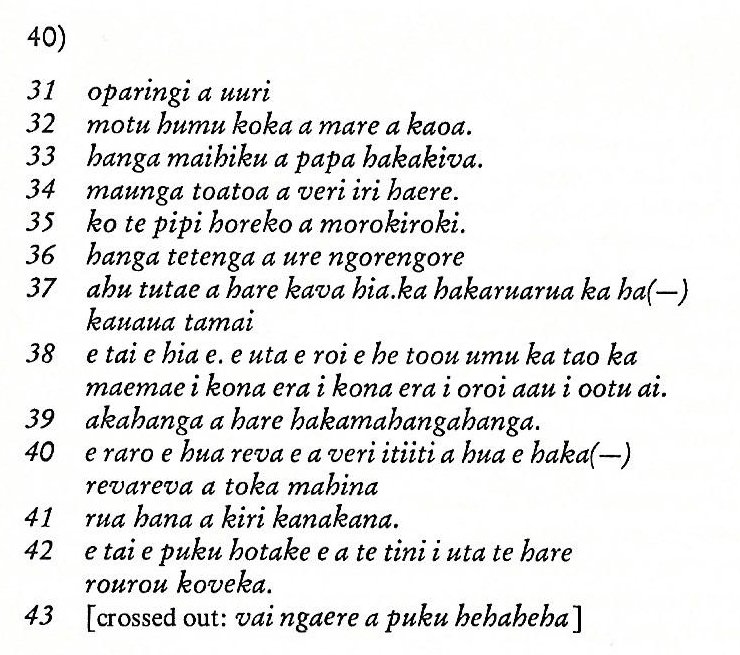
Given my suggested correlation
between day number 55 and right
ascension day 55 we ought to find
some significant place in the sky
roof corresponding
to right ascension day 30:
|
ki te henua - te maro |
rutua ... |
22 |
|
Rutu. 1. To read,
to recite, to pronounce
words solemnly; he-rutu i
te kohau motu, to read
the rongorongo tablets;
hare rutu rogorogo mo
hakama'a ki te ga poki ite
kai, i te rogorogo,
rongorongo school, house in
which children were taught
reading and writing the
rongorongo signs. 2. To pelt
with stones. 3. To gather in
great numbers (of people).
Vanaga. Sound.
Rutu-rongorongo = the
sound of recitation.
Barthel. T. Beat. Henry. To
recite; tae rutu,
irreverence. Churchill.
Pau.: rutu, a drum.
Mgv.: rutu, to beat,
to cause to resound. Ta.:
rutu, a drum, to drum.
Mq.: utu, to drum.
Sa.: lutu, to shake a
rattle. Churchill. |
 |
 |
|
Cb1-4 (396) |
Cb1-5 |
|
CLOSE TO THE SUN: |
|
Oct 20 (293)
14h (213.1)
π
Hydrae,
χ
Centauri (213.0),
MENKENT (Shoulder of the
Centaur) = θ Centauri
(213.1) |
21
Neck-2 (Dragon)
ASELLUS TERTIUS (3rd Ass
Colt) = κ Bootis, κ
Virginis, 14 Bootis
(214.8) |
|
'Sept 23 (266) |
24 |
|
CLOSE TO THE FULL MOON: |
|
April 20
Arku-sha-rishu-ku-2 (Back of
the Head of Ku)
2h (30.4)
κ
Arietis (30.3),
HAMAL (Sheep)
=
α
Arietis
(30.5)
ALKES (α
Crateris)
*354.0 = *30.4 - *41.4 |
21 (111)
η Arietis (31.9) |
|
'March 24 |
25 (84
= JULIAN EQUINOX) |
|
DAY 30 |
31 |
30 Ko Oparingi |
31 Oparingi |
30 ko oparingi a
a uuri |
31 oparingi a uuri |
|
Ta.:
turiopa, weakness of the
knees.
Rigi.
A very
detailed myth comes from the
island of Nauru. In
the beginning there was
nothing but the sea, and
above soared the Old-Spider.
One day the Old-Spider found
a giant clam, took it up,
and tried to find if this
object had any opening, but
could find none. She tapped
on it, and as it sounded
hollow, she decided it was
empty. By repeating a charm,
she opened the two shells
and slipped inside. She
could see nothing, because
the sun and the moon did not
then exist; and then, she
could not stand up because
there was not enough room in
the shellfish. Constantly
hunting about she at last
found a snail. To endow it
with power she placed it
under her arm, lay down and
slept for three days. Then
she let it free, and still
hunting about she found
another snail bigger than
the first one, and treated
it in the same way. Then she
said to the first snail:
'Can you open this room a
little, so that we can sit
down?' The snail said it
could, and opened the shell
a little. Old-Spider then
took the snail, placed it in
the west of the shell, and
made it into the moon. Then
there was a little light,
which allowed Old-Spider to
see a big worm.
At her request he opened the
shell a little wider, and
from the body of the worm
flowed a salted sweat which
collected in the lower
half-shell and became the
sea. Then he raised the
upper half-shell very high,
and it became the sky.
Rigi, the worm,
exhausted by this great
effort, then died.
Old-Spider then made the sun
from the second snail, and
placed it beside the lower
half-shell, which became the
earth. Larousse.
Ta.:
iki,
iini,
to pour, to spill. Sa.:
ligi,
liligi,
id. Ma.:
ringi,
riringi,
id. Ta.:
ninii,
id. Pau.:
riringi,
id. Churchill.
|
Hau Maka |
Hua Tava |
|
Ira |
Raparenga |
Ngukuu |
Ringiringi |
Nonoma |
Uure |
Makoi |
|
Sun |
Moon |
Mars |
Mercury |
Jupiter |
Venus |
Saturn |
|
|
te ua |
koia ra |
kua tuku ki to mata -
ki tona tukuga |
e kiore - henua -
pa
rei |
|
Ko. 1.
Article (ko te); preposition:
with (see grammar); prefix of
personal pronouns: koau, I;
kokoe, you (singular); koîa, he, she, it;
kokorua,
you (plural); ko tagi, koîa, he with his weeping. 2. Article
which precedes proper nouns, often
also used with place names: Ko
Tori, Ko Hotu Matu'a, Ko Pú. Koîa, exact:
tita'a koîa, exact demarcation. Seems to be the
personal pronoun koîa -
applied in the meaning of: thus it
is, here it is precisely. Vanaga. 1.
Negative; e ko, not, except;
e ko ora, incurable; ina
ko, not; ina ko tikea,
unseen; ina e ko, not; ina
e ko mou, incessant. 2. A
particle used before nouns and
pronouns; ko vau, I; ko te,
this; ko mea tera, this; ati ko peka, to avenge,
ko
mua, first, at first, formerly.
3. There, yonder. P Mgv.: ko,
over there, yonder. Ta.: ó,
there, here. Churchill.
Ta.:
ra,
a day.
Pa.
1. Mgv.: pa, an
inclosure, a fenced place. Ta.:
pa, inclosure, fortification.
Mq.: pa, inclosure. Sa.:
pa, a wall. Ma.: pa, a
fort. 2. Mgv.: pa, to touch.
Sa.: pa'i, id. Ma.: pa,
id. 3. Mgv.: pa, to prattle.
Ta.: hakapapa, to recount. 4.
Mq.: pa, a hook in bonito
fishing. Sa.: pa, a
pearlshell fishhook. Ma.: pa,
a fishhook. Pau.: hakapa, to
feel, to touch. Mgv.: akapa,
to feel, to touch, to handle
cautiously. 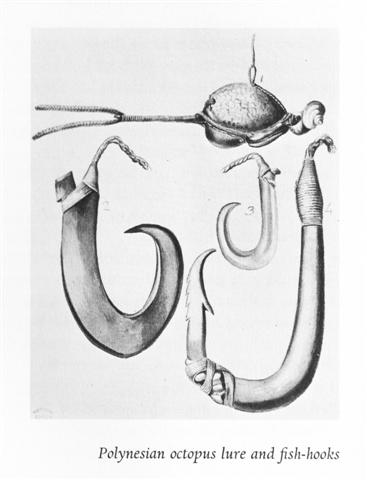
... Ana Onoono is a cave well-suited
as an overnight shelter; Pu
Ngotangota is a coastal formation
where the seawater is allowed to
flow in and out. The three
additions, 'house', 'cave', and
'hole', always describe an enclosed
area ... This
statement of Barthel ought to be
extended to include also pa
itself.
... In later research it was
postulated that the [Phoenician]
alphabet is actually two complete
lists, the first dealing with land
agriculture and activity, and the
second dealing with water, sea and
fishing.
The
first half beginning with Alef
- an ox, and ending with Lamed
- a whip. The second list begins
with Mem - water, and
continues with Nun - fish,
Samek - fish bones, Ayin
- a water spring, Peh - the
mouth of a well, Tsadi - to
fish, Kof, Resh and
Shin are the hook hole, hook
head and hook teeth, known to exist
from prehistoric times, and the
Tav is the mark used to count
the fish caught ... |
 |
 |
 |
 |
|
Cb2-4 (420 = 7 * 60) |
Cb2-5 (29) |
Cb2-6 |
Cb2-7 |
|
...
The Maya word cab
means earth, world,
tierra, the place
below,
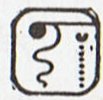
opposed to caan,
the sky. The
overwhelming evidence on
the glyph and its
associations in the
pictures and texts is
for this same meaning,
Earth. A most
interesting glyph in
this connection is one
found in Maudslay's
Tikal, plate 74, glyph
13, our form 17.33.
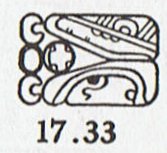
The
text on the stela shows
that this glyph
indicates the passage of
one day, from 6 Eb, 0
Pop to 7 Eb, 1
Pop; the sun or
kin, preceded by the
numeral 1, is seen
entering between the
caban-sign and what
we shall later come to
identify as the
sky-glyph ...
In the beginning there
were only Sky and Earth
'in close embrace', and
when Air entered in
between them it was a
fundamental change from
2 to 3.
...
The ancient Chinese
said: One generates
Two, Two generates
Three, and Three
generates Everything.
And reasonably there
should be a Sign of '3'
where this event
occurred. At left in
glyph 17.33 a triplet of
'stones' arranged
vertically could have
visualized the season
of Sky (top), the
season of Air (central)
and the season of Earth
(bottom). But since top
and bottom are quite
similar the meaning
could be the northern
sky respectively the
southern sky with the
equatorial (inhabitable)
belt in between ... |
|
CLOSE TO THE SUN: |
|
Nov 13
κ
Librae (237.2),
ι
Serpentis (237.4),
ψ²
Lupi,
ρ
Oct.
(237.5), γ Cor.
Borealis, η Librae
(237.7),
COR
SERPENTIS = α Serpentis
(237.9)
*196.0 = *237.4 - *41.4 |
14
π
Cor. Borealis,
UNUK ELHAIA (Necks of
the Serpents) =
λ
Serpentis
(238.1),
CHOW =
β
Serpentis
(238.6) |
15
κ
Serpentis (239.3),
δ
Cor. Borealis,
TIĀNRŪ =
μ
Serpentis
(239.5),
χ
Lupi, (239.6),
ω
Serpentis (239.7),
BA (= Pa) =
ε
Serpentis,
χ
Herculis (239.8).
κ
Cor.
Borealis, ρ Serpentis
(239.9) |
16 (320)
λ
Librae (240.0),
β
Tr. Austr. (240.3),
κ
Tr. Austr. (240.4),
ρ
Scorpii (240.8)
*199.0 = *240.4 - *41.4 |
|
'Oct 17 (290) |
18 |
19 (292 = 4 * 73) |
20 |
|
"Oct 3 |
4 (277) |
5 |
6 |
|
SEPT 10 |
11 |
12 (255 = 3 * 85) |
13 |
|
DAY 237 |
238 |
239 |
240 |
|
CLOSE TO THE FULL MOON: |
|
May 14
δ Persei (54.7) |
15 (500 = 365 + 135)
Al Thurayya-27 (Many
Little Ones) /
Krittikā-3 (Nurses of
Kārttikeya) /
TAU-ONO (Six Stones)
ATIKS =
ο
Persei,
RANA (Frog) =
δ
Eridani
(55.1),
CELAENO (16 Tauri),
ELECTRA (17), TAYGETA
(19),
ν
Persei (55.3),
MAIA (20), ASTEROPE
(21), MEROPE (23)
(55.6) |
16 (136)
Hairy Head-18 (Cockerel)
/
Temennu-3 (Foundation
Stone)
ALCYONE
(56.1),
PLEIONE (28 Tauri),
ATLAS (27 Tauri)
(56.3) |
17
MENKHIB (Next to the
Pleiades =
ζ
Persei
(57.6)
PORRIMA (γ Virginis) |
|
'April 17 (80 + 27) |
18 (108 = 135 - 27) |
19 |
20 |
|
BISSEXTUM (54 - 55) |
56 (8 WEEKS) |
57 (= 137 - 64 - 16) |
|
... The leap day was
introduced as part of
the Julian reform. The
day following the
Terminalia (February 23)
was doubled, forming the
'bis sextum -
literally 'double
sixth', since February
24 was 'the sixth day
before the Kalends of
March' using Roman
inclusive counting
(March 1 was the 'first
day'). Although
exceptions exist, the
first day of the bis
sextum (February 24)
was usually regarded as
the intercalated or
'bissextile' day since
the third century.
February 29 came to be
regarded as the leap day
when the Roman system of
numbering days was
replaced by sequential
numbering in the late
Middle Ages ... |
|
"April 3
|
4 |
5 |
6 (96) |
|
MARCH 11 |
12 (135 - 64 = 71) |
13 |
14 (→ π) |
|
DAY 54 |
55 |
56 |
57 |
|
54 Vai Rapa |
- |
56 (Sic!) Vai Rutu Manu |
57 Hanga Piko |
|
54
vai rapa a hakaremereme |
56 te
vai rutu manu a koro
rupa.e haho e hivi e
e
runga e
te puku ohu kahi
e. |
57
hanga piko a
hare rutu manu a
ana onoono
a
Pu ngotangota. |
|
According to Barthel the
'shimmering water' (vai
rapa) was located
north of Ana Kai
Tangata (Cave for
Eating Man) with
Hanga Piko (Curved
Bay) a bit further
north. In between was
Te Vai Rutu Manu:
... The 'watering place'
where the bird beats
(the rhythm)' -
wordplay, 'where a
certain chant is being
recited' - is located
near Hanga Piko. A
recitation provides the
following information
for the additional name:
'In Koro Rupa is the
house where one is made
to laugh; in Kere Mea is
the house where one is
made fun of' (Barthel
1960:851; Campbell
1971:400). There the
rule of the new birdman
was celebrated (compare
koro 'feast'). In
RAP., koro rupa
seems to have the same
meaning as in TUA.
kororupo, which
describes a paradise. In
the cosmology of the
TUA., the name also
referred to the entrance
to the underworld.
Hivi (maybe the same
as hi ivi 'to
fish with a hook made
from bone'; compare the
narrative ME:363) is
'outside', and 'the
elevation from where
(the catch of) the
tunafish is announced'
is 'above'. This is a
reference to a large
boulder beside the place
where the canoes docked
in Hanga Piko. There the
people waited for the
canoes to return from
the fishing grounds." (The
Eighth Land, pp.
89-90.)
Kahi. Tuna; two
sorts: kahi aveave,
kahi matamata.
Vanaga. Mgv.: kahi,
to run, to flow. Mq.:
kahi, id. Churchill.
Rangitokona, prop
up the heaven! //
Rangitokona, prop up
the morning! // The
pillar stands in the
empty space. The thought
[memea] stands in
the earth-world - //
Thought stands also in
the sky. The kahi
stands in the
earth-world - // Kahi
stands also in the sky.
The pillar stands, the
pillar - // It ever
stands, the pillar of
the sky. (Morriori
creation myth according
to Legends of the South
Seas.)
Puku. 1. To
feel an urge to defecate
or to urinate, etc.:
ku-puku-á te mimi:
to need to urinate. 2.
Rock, boulder: puku
ma'ea; puku oone,
hillock, earth mound. 3.
Puku tagata,
pubis. Puku-ine,
to get stuck in the
oesophagus (of food).
Pukupuku, joints,
bones of a joint;
pukupuku rima, wrist
bones; pukupuku va'e,
ankle. Pukuraga,
followers, disciples,
students. Puku
rekoreko is the
juicy part between two
knots (puku).
Vanaga. 1. Puku haga
oao, east, east
wind. 2. Pubes. T Mgv.:
puku, clitoris;
pukuhou, the age
of puberty; pukutea,
a man between 30 and 45.
3. Unripe; puku no,
unripe; pukupuku,
green, immature. Mgv.
puku, to be unripe.
Mq.: puku, a
fruit which has not yet
reached its maturity. 4.
To gorge; mahaga puku,
to take the bait
greedily. PS Sa.:
pu'u, to take the
whole at one mouthful,
to put into the mouth
whole. Fu.: pukupuku,
to rinse the mouth, to
gargle. Niuē:
puku,
to take into the mouth.
Pukuhina,
(puku
4), to choke on a
fishbone. Pau.:
pukua,
to choke with a
fishbone. Mgv.:
pukua,
to be suffocated by
anything that sticks in
the throat. Mq.:
pukua,
bad deglutition. Ta.:
puunena,
puufeto,
to choke, to gag. Ha.:
puua,
to be choked, to have
something sticking in
the throat.
Pukupuku;
1. Elbow. G. 2.
Wrinkled, knotty, wen,
scrofula; gao
pukupuku,
scrofula. T Pau.:
puku,
a swelling;
pukupuku,
a wrinkle, knotty,
rough. Mgv.:
puku,
a knot in the wood;
pukupuku,
knotted, rough, uneven,
lumpy. Mq.:
puku,
knot in wood, boss,
protuberance, tumor,
boil; toopuku,
toopuu, boil,
wart, tumor;
pukupuku,
wrinkled, knotty. Ta.:
puú,
boss, protuberance,
swelling;
puúnono,
tumour; puúpuú,
wrinkled, knotty.
Pukuraga,
servant T. Churchill.
Rei matapuku,
necklace made of
coral or of
mother-of-pearl. Henry.
Ohua. Night in
the Moon calendar:
 |
 |
 |
|
Ohua |
Otua |
|
CLOSE TO THE
SUN: |
|
12h (182.6) |
ALCHITA |
PÁLIDA |
|
DAY 182 |
183 |
184 |
|
CLOSE TO THE
FULL MOON: |
|
March 20 |
SIRRAH |
ALGENIB
PEGASI |
|
DAY 364 |
0h (365.25) |
1 |
This
'bird beating the
rhythm' was mentioned
also at the item for
Hanga Piko, in the
house (hare) of
the cave (ana)
'SixSix' (onoono).
"Ana Onoono is a cave
well-suited as an
overnight shelter; Pu
Ngotangota is a coastal
formation where the
seawater is allowed to
flow in and out. The
three additions,
'house', 'cave', and
'hole', always describe
an enclosed area."
(Barthel, a.a., p 90)
Clearly
Ana Onoono may
have been referred to
earlier in Manuscript E,
when they carried the
severely injured
Kuukuu down into a
cave and piled up 6
stone heaps outside who
would answer when he
called out → 6 heaps for
6 men → 36(0).
Likewise
can we perceive a
correspondence between
the coastal formation
Pu Ngotango, where
water freely flowed in
and out, and the
movements of the
explorers when they
'behaved like turtles',
when they rode the waves
repeatedly towards the
beach. 'Turtle' → boat
(cfr Zaurak).
... po-tagotago,
darkness. po o te
tagata, life ... |
|
...
we read of a fisherman
later revered as a deity
named Urashima:
He was hadsome of
feature ... He went out
alone in a boat to fish
with hook and line.
During three days and
nights he caught
nothing, but at length
he caught a turtle of
five colours. Wondering,
he put it in the boat
... While he slept the
turtle suddenly became
transformed into a
woman, in form beautiful
beyond description ...
He said to her, 'This
place is far from the
homes of people, of whom
there are few on the
sea. How did you so
suddenly come here?'
Smiling she replied, 'I
deemed you a man of
parts alone on the sea,
lacking anyone with whom
to converse, so I came
here by wind and cloud.'
She is,
of course, a Kami
[a spirit], as he
quickly understands,
from a magical land that
'lasts as long as sky
and earth and ends with
sun and moon'. And she
tempts him: 'You can
come to that region by a
turn of your oar. Obey
me and shut your eyes.'
So presently they came
to a broad island in the
wide sea, which was
covered with jewels. (On
it was a great mansion.)
Its high gate and towers
shone with a brilliance
which his eyes had never
beheld and his ears had
never heard tell. They
enter the mansion and
are received and greeted
in a loving fashion by
her parents: 'Seated
they conversed of the
difference between
mankind and the
Land-of-Spirits, and the
joy of man and Kami
meeting.
Eventually the fisherman
Urashima and the
beautiful sea Kami
are married. Thereafter:
'For three years, far
from his aged parents,
he lived his life in the
Spirit capital, when he
began to yearn for his
home and for them.'
Observing the change in
him, his wife asks: 'Do
you desire to return
home?' He replies: 'To
come to this far Spirit
Land, I parted from my
near and kin. My
yearning I cannot help
... I wish to return to
my native place to see
my parents for a while'.
Then we read: Hand in
hand they walked
conversing ... till they
came to where their ways
diverged and where her
parents and relatives,
sorrowing to part with
him, made their
farewells.
The
princess informed him
that she was indeed the
turtle which he had
taken in his boat, and
she took a jewel-casket
and gave it to him
saying: 'If you do not
forget me and desire to
seek me, keep this
casket carefully, but do
not open it.' Thus he
parted from her and
entered his boat,
shutting his eyes as she
bade him. In a trice
Urashima finds
himself back in his home
village again but a
terrible surprise awaits
him. During the three
years that he has spent
enchanted on the Spirit
island 300 mortal years
have passed and
everything has changed
beyond recognition.
Stumbling around dazed
and disconsolate,
discovering from a
passer-by that his own
disappearance three
centuries previously is
itself now the subject
of a village legend, he
forgets the warning
about the jewel box and
opens it to remind
himself of his Kami
wife: 'But before he
could look into it,
something in the form of
a blue-orchid soared up
to the blue sky with the
wind and clouds. Then he
knew that, having broken
his oath, he could not
go back and see her
again ... |
|
...
Several Asian cultures,
including that of the
Andaman Islands, believe
that humanity emerged
from a bamboo stem. In
the Philippine creation
myth, legend tells that
the first man and the
first woman were split
open from a bamboo stem
that emerged on an
island created after the
battle of the elemental
forces (Sky and Ocean).
In
Malaysian legends a
similar story includes a
man who dreams of a
beautiful woman while
sleeping under a bamboo
plant; he wakes up and
breaks the bamboo stem,
discovering the woman
inside. The Japanese
folktale 'Tale of the
Bamboo Cutter' (Taketori
Monogatari) tells of
a princess from the Moon
emerging from a shining
bamboo section. Hawaiian
bamboo ('ohe) is
a kinolau or body
form of the Polynesian
creator god Kane.
An
ancient Vietnamese
legend tells of a poor,
young farmer who fell in
love with his landlord's
beautiful daughter. The
farmer asked the
landlord for his
daughter's hand in
marriage, but the proud
landlord would not allow
her to be bound in
marriage to a poor
farmer. The landlord
decided to foil the
marriage with an
impossible deal; the
farmer must bring him a
'bamboo tree of
one-hundred sections'.
The benevolent god
Bụt appeared to the
farmer and told him that
such a tree could be
made from one-hundred
sections from several
different trees. Bụt
gave the him four magic
words to attach the many
sections of bamboo: 'Khắc
nhập, khắc xuất',
which means 'put in
immediately, take out
immediately'. The
triumphant farmer
returned to the landlord
and demanded his
daughter. The story ends
with the happy marriage
of the farmer and the
landlord's daughter ... |
The signficance of day 396 (=
360 + 36 = 364 + 32) was
documented also in the tresses
of Pachamama (the Earth
Mother):
|
Counting in the
tresses of
Pachamama from
right to left: |
|
1 |
26 |
78 |
1 |
29 |
90 |
|
2 |
26 |
2 |
30 |
|
3 |
26 |
3 |
31 |
|
4 |
25 |
104 |
4 |
34 |
124 |
|
5 |
26 |
5 |
31 |
|
6 |
27 |
6 |
30 |
|
7 |
26 |
7 |
29 |
|
Total
= 396 = 182 + 214 (=
364 + 32) |
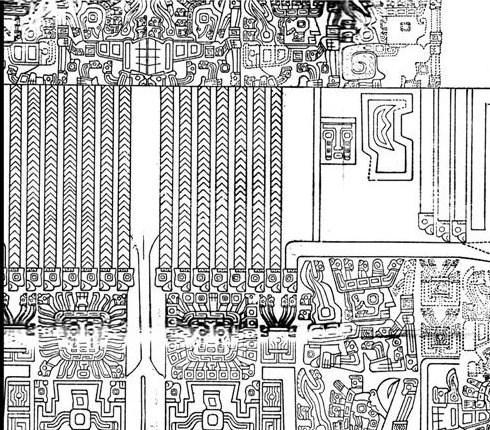
|










